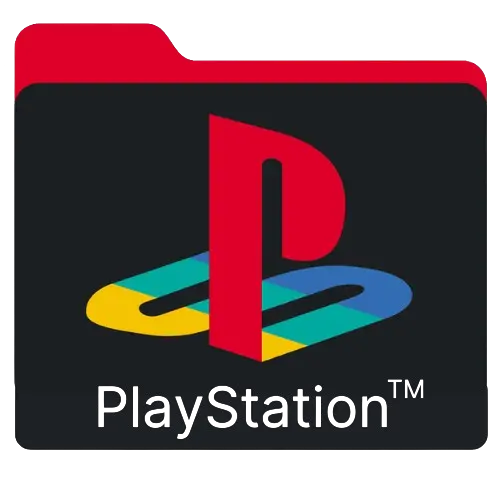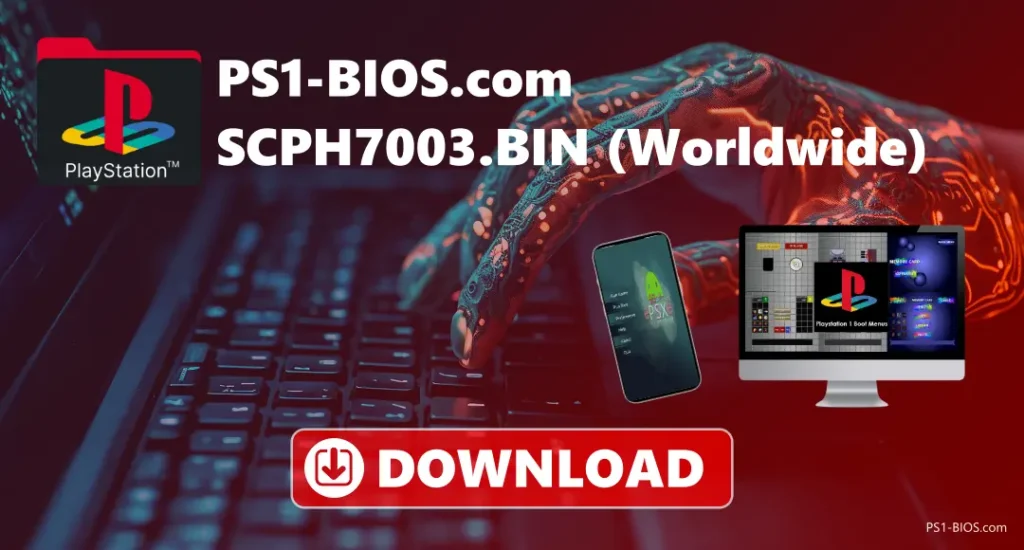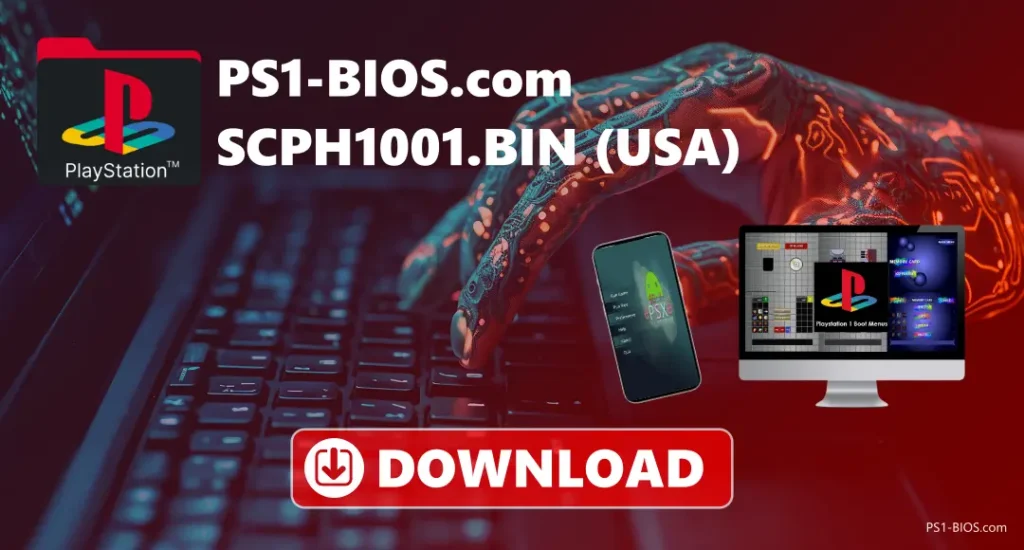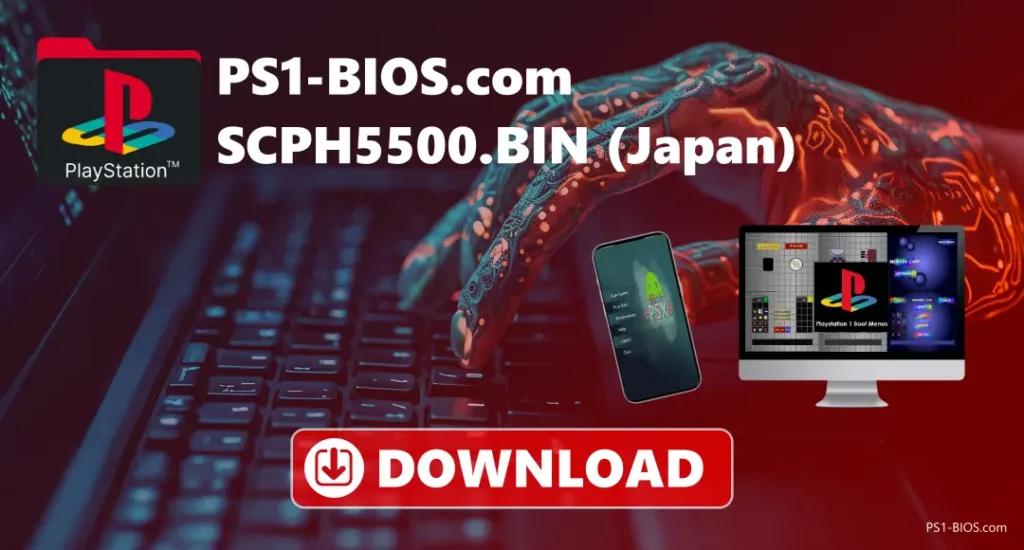
The PS1 BIOS is a crucial file that a PS1 emulator requires to function properly. Because PS3 games are designed to run exclusively on the PlayStation console, the emulator utilises the BIOS file to facilitate the proper operation of those games on your device.
PS1 BIOS
The PS1 BIOS is a program for the PlayStation 1 console that helps the console run properly. It’s like the main instructor of the console that tells the console what to do when you start it. The BIOS checks the system, sets up the hardware, and helps load the game. Emulators, which let you play PS1 games on a computer or phone, also need the BIOS to work properly. Without it, most games won’t run. There are different versions of the BIOS, and you can play games from any region. You can usually find BIOS files online on our website.
What is PS1 BIOS?
The PS1 BIOS helps the PlayStation console start and run games. When you turn on the console, the BIOS checks if the game file is corrupted or any interruption in the file and sets everything up, like the graphics, sound, and memory cards. It also shows the PlayStation logo at the beginning in the emulator to feel like you are playing on the real console. If you’re using an emulator to play PS1 games on a computer, the BIOS is usually needed too. There are different versions of the BIOS, depending on the region, so while downloading the BIOS file you should know your region so that the emulator can run the game of that region smoothly.
Why do we need the PS1 BIOS on an Emulator?
You need the BIOS file when using a PS emulator because it is the important system files that help the emulator to run your PlayStation 1 game on your non-PS console device. This file helps the emulator to run games by optimising graphics, sound, saving files and much more. Without it, the emulator can’t run, and many games won’t work properly. The file also helps games run more smoothly with high resolution quality. Well, to download it, just find the link on this website, and the setup process is much easier, so for all the details, just read the whole article.
Key Features of PS1 BIOS
Boots PS1 games
Multiplayer supports
Supports controller
How to set up PS1 BIOS?
The PS1 BIOS is a very important file for using the DuckStation emulator. It helps the emulator run games more smoothly. Without the BIOS, games might not work properly. The BIOS is like the system software from a real PS1 console. The set-up process is very simple in the emulator just follow the given steps below:-
How to install PS1 BIOS on Emulator?
Download PS1 BIOS Files for All Regions – USA, PAL, NTSC, NTSC-J
SCPH7003.BIN – Worldwide

The SCPH-7003 Worldwide is the BIOS for PlayStation that supports games from different regions. It allows you to play games made for Japan, North America, and Europe on the same system. This BIOS helps the PlayStation emulator to start up and run the games smoothly.
Download PS1 BIOS SCPH1001.BIN – (USA)

The SCPH-1001 [NTSC-U] is the BIOS file for the PlayStation released in North America. It allows you play games that were made for the U.S. version of the console. This BIOS helps the PlayStation start up and run the game correctly.
Download PS1 BIOS SCPH5500.BIN – Japan

The SCPH5500.BIN is the BIOS for the Japanese version of the original Sony PlayStation. It allows you to play games made for the Japanese version of the console. . If you are using a Japanese PlayStation or playing Japanese PS1 games on an emulator, you need this BIOS to make the games work properly.
Download PS1 BIOS SCPH7502.BIN – PA

The SCPH7502.BIN [PAL] is the BIOS for PlayStation consoles released in Europe and other PAL regions. It allows you to play games made for the PAL version of the console. If you are using a PAL PlayStation or playing PAL PS1 games on an emulator, you need this BIOS to make the games work properly.
PS1 BIOS file versions
| SCPH-1000 [NTSC-J] | DOWNLOAD |
| SCPH-1001 [NTSC-U/C] | DOWNLOAD |
| SCPH-1002 [PAL] | DOWNLOAD |
| SCPH-3000 [NTSC-J] | DOWNLOAD |
| SCPH-3500 [NTSC-J] | DOWNLOAD |
| SCPH-5501 [NTSC-U/C] | DOWNLOAD |
| SCPH-5500 [NTSC-J] | DOWNLOAD |
| SCPH-5502 [PAL] | DOWNLOAD |
| SCPH-5552 [PAL] | DOWNLOAD |
| SCPH-7000 [NTSC-J] | DOWNLOAD |
| SCPH-7001 [NTSC-U/C] | DOWNLOAD |
| SCPH-7002 [PAL] | DOWNLOAD |
| SCPH-7003 [NTSC-J] | DOWNLOAD |
| SCPH-7501 [NTSC] | DOWNLOAD |
| SCPH-7502 [PAL] | DOWNLOAD |
| SCPH-9002 [PAL] | DOWNLOAD |
| SCPH-100 [NTSC-J] | DOWNLOAD |
| SCPH-101 [NTSC-U/C] | DOWNLOAD |
| SCPH-102A [PAL] | DOWNLOAD |
| SCPH-102B [PAL] | DOWNLOAD |
| SCPH-102C | DOWNLOAD |
How to Use PS1 BIOS on Mobile and PC?
You can easily set up this file on your emulator. This file has important information that the emulator needs, just like a real PS1 console does. There are some simple steps to set up on your device, and once it’s done, you are ready to run the PS game on your non-console device. Here are the steps to set it up:-
Steps to Use PS1 BIOS on Android:-
Steps to Use PS1 BIOS on Windows:-
Steps to Use PS1 BIOS on Mac:-
How to download PS1 BIOS?
- Visit our website, find the download page in the website.
- Download and install a PS1 emulator and its BIOS file.
- Place the BIOS file into the emulator’s BIOS folder on your device.
- Open the emulator and go to the settings or options menu.
- Choose the BIOS from the list of BIOS files.
- Save the settings and restart the emulator.
- Load your Japanese PlayStation game and start playing, as the emulator doesn’t have the pre-game installed.
PS1 BIOS Requirements
- Operating System: Windows 7/8/10/11
- RAM: 2 GB or more
- Processor: Intel Core i3
- Storage: At least 500 MB free space
How to Set up PS1 BIOS?
Common PS1 BIOS Errors and Fixes
- Corrupted BIOS file: The BIOS file might be damaged. Try to download it again only from our website.
- Wrong BIOS file: You might be using the wrong BIOS for your game. Use SCPH1001.BIN for USA games or SCPH7502.BIN for Europe, and other BIOS according to the region.
- Wrong region setting: Games from Japan, Europe, or the USA need matching settings. Set your emulator to the same region as your game and BIOS.
- Emulator keeps crashing: If your emulator keeps closing, it may be broken. Delete it and install it again to fix it.
- BIOS not found: If the emulator can’t find the BIOS file. Make sure it’s in the right folder. if not, then move the BIOS file into the BIOS folder found inside the emulator directory
- Wrong BIOS file type: Only .bin files work with most emulators. Don’t use files that are zipped or renamed.
- No sound: If the game has no sound, check your sound settings. Also, make sure the BIOS is the right one for your game, as there is a region-specific BIOS needed for the respective region games.
- Black screen when starting: If nothing shows up when starting, the game or BIOS file may be corrupted. Check both files again.
Tips to Optimise Emulator with PS1 BIOS
Troubleshoots
- The emulator can’t find the BIOS: Open the settings in your emulator and look for the option to choose or load the BIOS file. Then, find the file on your device and select it so the emulator can use it properly.
- The game won’t start: This can happen if the BIOS and the game are not from the same region. Make sure both match. Also, check if the game file works correctly and is not corrupted.
- Sound glitches: Try lowering the graphics settings, turning off extra features like V-Sync, and closing other apps running in the background. This can help the emulator run better.
- The BIOS file isn’t working: Make sure you have the correct BIOS file and that you put it in the correct folder in your emulator app. If the BIOS is not in the path, the emulator won’t be able to use it.
- The emulator crashes: If the emulator keeps closing by itself or stops working, make sure you’re using the newest version of the emulator. Also, check that the BIOS file is not corrupted or download it again.
- Game runs slowly: If the game runs slowly, turn on Fast Boot and frame skipping in the settings. Also, try closing other apps.
- BIOS not loading at all: If the BIOS still doesn’t work, delete the file and download it again from our website. Then, add the new file to your emulator and try again.
Conclusion
The BIOS is a very important file that helps your emulator play PlayStation games correctly. It makes sure the game looks and sounds right, saves your progress, and works like a real PlayStation. Without it, games will not start or work well. Setting it up is easy, just download the file, add it to the emulator in the settings, and then open your games. To get the best results, use the correct BIOS file from our website and make sure it matches your game’s region.